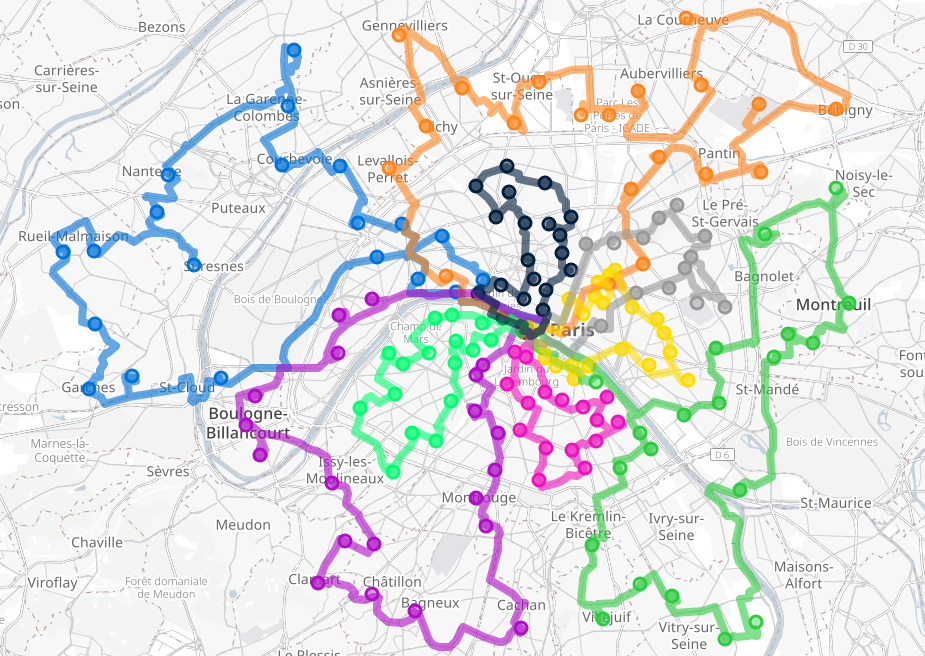For a mixed fleet, the efficient use of different vehicle types is crucial in determining the logistics of the last-mile. And this is precisely the efficiency our API can now provide thanks to an updated version of VROOM, the open-source software that we have developed for optimizing fleet operations.

An example of the way tasks are normally divided between cars and electric bikes – Map data © OpenStreetMap contributors
Handling multiple profiles
A vehicle’s “profile” provides its characteristics and dictates the routes it can take and the speed at which it can negotiate each leg of them. For route optimization, it is essential to be able to calculate the differing speeds of electric cargo bikes, lightweight vehicles, and trucks.
To date, our API has proposed a variety of vehicle profiles, but one particular vehicle has always been chosen to fit the scale of a given problem. In other words, until now, it has not been possible to optimize routes that are most efficiently served by vehicles of varying kinds. This was a significant limitation, for it is often necessary to combine vehicle types. And the need for a combined approach continues to increase. For example, for environmental reasons, certain urban areas are now open to green transport only.
Our API can now take these restrictions into account and select the vehicle best suited for each context. In the illustration above, five electric bikes are used for the short hauls in heavily trafficked, urban areas, while cars are used for the longer runs outside the city. Our API’s ability to adapt to different vehicle profiles comes in addition to its longstanding ability to take into account other factors, such as load capacity and availability.
Efficient Implementation
Modifying the way we deal with route times was a delicate matter, for it involved a primitive that lies at the heart of all our optimization algorithms. On a technical level, we had to refactor our code. This gave us the opportunity to include a speed coefficient, which allows our users to fine-tune even more accurately the transportation times of each vehicle.
To take the diversity of vehicles into account, we also had to adjust our approach to problem solving. Then, because this added feature provided solutions for new kinds of problems, we had to introduce new performance benchmarks. The solutions proved excellent, both in cost-effectiveness and for the speed at which we arrived at them, the latter because of the optimized data structures we put in place.
Contact us if you would like to discuss the best way to manage your mixed fleet of vehicles.
